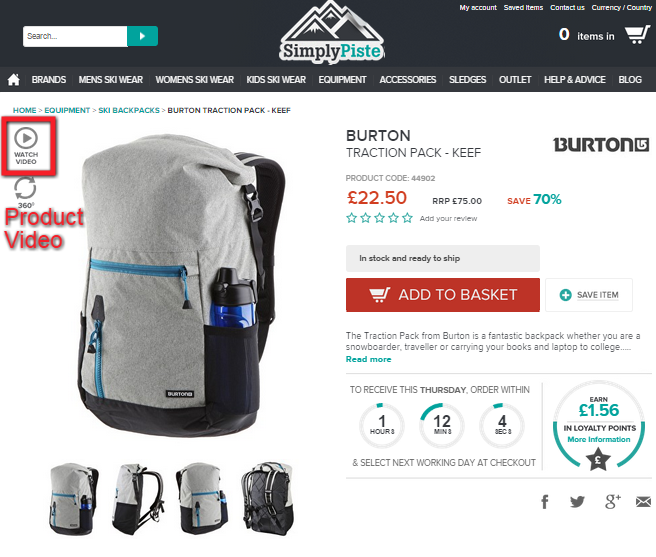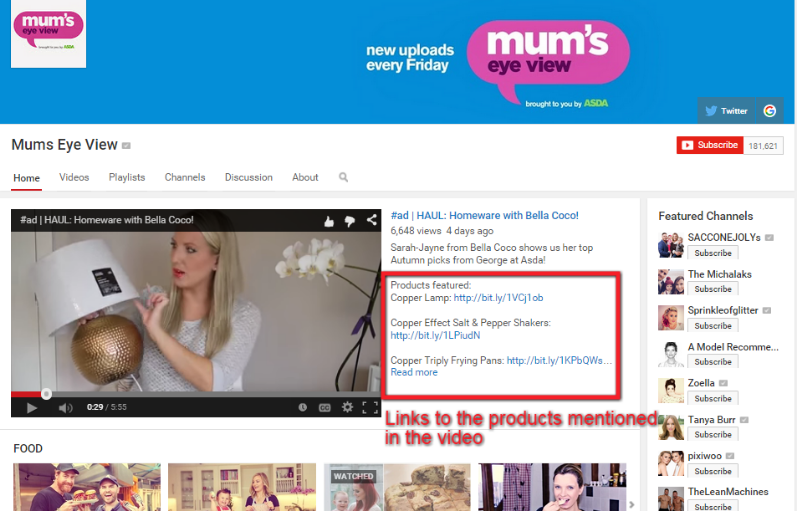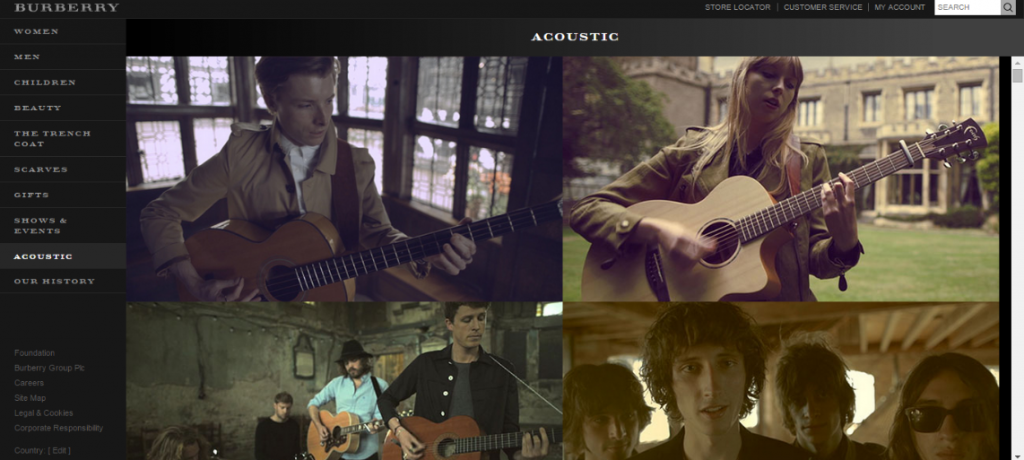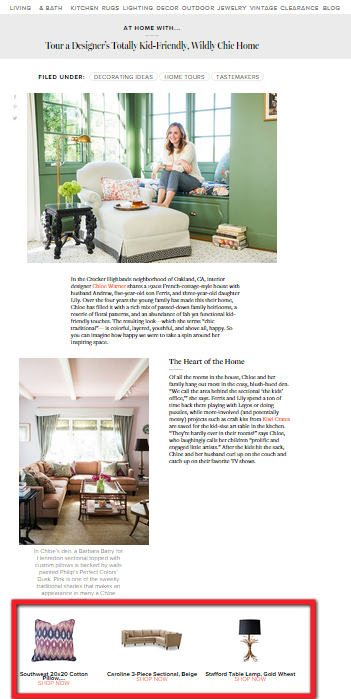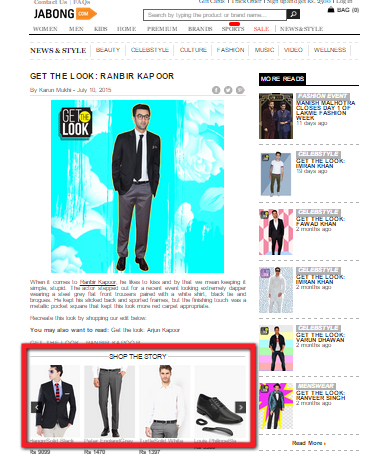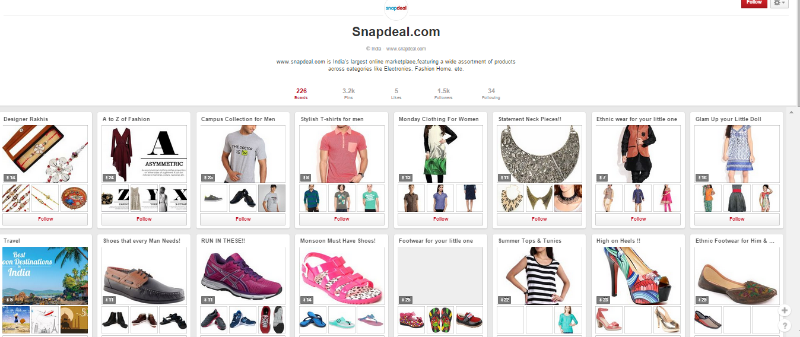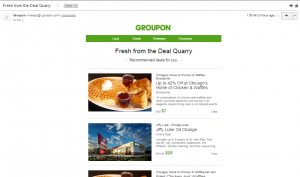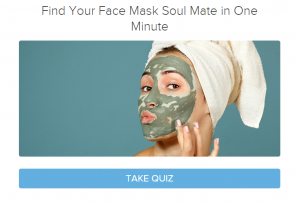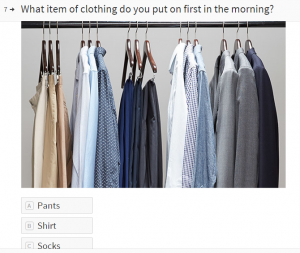10 Creative Content Ideas for E-Commerce Businesses To Boost Sales
Articles. Checked. Facebook status. Checked. Tweets. Checked.
It seems like every ecommerce business is doing blogs and social media uploads to reach out to their prospective audience and keep them engaged.
But, like they say “too much of anything makes you puke”, these common content marketing strategies are no longer favored by consumers. Likewise, producing the same kind of content doesn’t help the brand stand out from its competitors.
Only occasionally do a few remarkable ecommerce businesses come up with some really creative content ideas that, like Steve Jobs used to say, “put a dent in the [digital] universe”.
Here are some such killer content ideas, categorized into three sections i.e. videos, graphics and interactive visual content, that you too can use to drive consumer engagement and sales for your ecommerce website.
A. VIDEO CONTENT
1. Product Videos
Statistics tell that good product videos can boost the cart sizes by 174%, and increase the likelihood of a purchase by 85%. As such, product videos have huge potentiality in driving sales for any ecommerce sites.
Case Study: Simply Piste
Simply Piste, an online retailer dealing in ski wear and snowboarding clothing, made use of videos to give the shoppers a quick demonstration of its products. Eventually, the videos paid off. Simply Piste reported of 25% increase in conversion rate on pages that included product videos.
Ecommerce Example: Williams Sonoma
Williams Sonoma, a kitchenware and home furnishing retailer, has also been busy putting up product videos alongside quality images of the product and a well written product description.
Product description also matters.
Since there are so many products, ecommerce sites tend to slip back to using the manufacturer’s copy in the product description. This is not a good idea since several other ecommerce websites might be doing the same, and therefore you won’t be able to distinguish yourself in the niche.
So, taking the time and effort to write good product copy, while a small change, can make consumers really happy (especially if you talk about the product experience and not just blandly speak of the technical stuff like ‘this product constitutes this percentage of this material’).
Both Williams Sonoma and Simply Piste mentioned above put effort on writing personalized product descriptions to give a good impression to their consumers.
2. Vine
Ecommerce Example: Lowes
Lowes is a home improvement product marketplace, and as such it uses Vine’s powerful 6 second auto-looping video style to give helpful how-to tips and insights regarding homely affairs like how “a banana peel can save your rosebed”, “soaking dirty grill grates in coffee for 1 hour can make washing it easier” and such other improvement hacks with clever (and amusing) visuals.
In some videos, Lowes subtly promotes their home improvement products. And, even if the viewer doesn’t face any such problem, these 6 second tips and DIY videos gives Lowes the trust factor that would drive future sales. At present, Lowes has a fan following of 32.1k in Vine.
Takeaway: Use Vine to roll out how-to videos to solve your consumer problems as well as engage with them.
3. YouTube Videos
Ecommerce Example: Asda
Asda is a supermarket retailer whose target audience is moms. And, statistics say that moms are a big fan of how-to videos, and they prefer to hang out in YouTube.
Considering this insight about their target audience, Asda launched a separate YouTube channel that it calls “Mum’s Eye View”, wherein it posts how-to videos on food recipes, lifestyle and beauty tips for moms.
The unique sales strategy Asda uses here is to fill the YouTube description field with links of the products featured in the video.
And it worked.
Asda had laid out a target of achieving 750,000 views in the first year. Surprisingly, they met their target in just 8 weeks. Seems like YouTube was a great idea.
The best thing is, of course, the fact that over 1,100 people have used the product links to purchase the featured products.
That’s a huge success for ecommerce content marketing.
Currently, Mum’s Eye View has over 181,000 subscribers (while the official Asda YouTube Channel only has a little over 3000 subscribers).
Takeaway: Video content has higher conversion rate than plain text articles.
Ecommerce Example: Urban Ladder
Urban Ladder, an online marketplace for furniture, has been rolling out engaging video content on its YouTube Channel. I absolutely love the “Old Dog. New Tricks!” video as well as the others on this delightful “creature comforts” series.
Besides the funny cat-dog spots, the video series tagged with “#ULstory” shows great potential as content marketing (if only they were to follow Asda’s lead and provide links of the furniture featured in the video to drive traffic to website and boost sales). The brand however manages to capture consumer experience and connects with consumers, showcasing how furniture bought from Urban Ladder made their consumer’s homes, and life, beautiful.
Takeaway: Generate funny/inspiring video content to make the consumers warm up to your brand and engage. Also, use the power of video to showcase how your products have made consumer’s life beautiful.
4. Music Videos
Ecommerce Example: Burberry
Burberry, a British luxury brand, turned to music as the medium of engagement for its consumers. Burberry gets new music artists to perform acoustic covers while wearing the clothes from Burberry’s own collection.
It shares these Burberry Acoustic songs online over to their audience, who “thank Burberry” for the exposure to “great new artists” and their “quality music”. It’s clever how Burberry manages to package advertising in music.
Takeaway: Everyone loves music. Invest in generating musical content for your brand or find what else your target audience likes, and “do a bit more” to engage them.
B. GRAPHICS & CONTENT STYLES
1. Sleek Magazine-like-Content
Glossy magazines. If you can find one, you will turn the pages and read. Or skim. Or just see the images. But you definitely check out magazines. And that’s what matters for marketers. If the consumers would only see the product images, their job is half done.
Ecommerce Example: Mr. Porter- The Journal
Mr Porter, an online retail site for men’s style, engages with it consumers through how-to videos and social media posts but its marketing ace is that sleek blog, which goes by an apt name- The Journal.
The Journal has great contents. Guides, tips interviews and more.
Each new piece is absolutely amazing in that it doesn’t look like product advertisement in any sense but it is! It’s really clever of Mr. Porter to subtly give out links to the products that are featured in the contextual images.
In the above interview-style content piece, Mr Porter tells you of the lifestyle of Ben Rosenfield (an actor and folk musician). It’s a fabulous read but what’s more interesting for you as an ecommerce marketer is how Mr Porter inconspicuously gives out links to the clothes Rosenfield is pictured wearing.
Associating a celebrity with their products also boost engagement and makes for hot gossips and social shares.
The Journal is full of interesting reads (not just interviews), and at the bottom of each post, you will find links to products that were displayed, mentioned or are relevant to the content piece.
Takeaway: The blog strategy here seems to be showing how products become part of a person’s lifestyle, with stunning well-photographed pictures that excite the viewers and make them want to “steal the look”.
Ecommerce Example: One Kings Lane – “Style Blog”
After Mr Porter, the other ecommerce blog I absolutely adore is that of the One Kings Lane, an ecommerce website that deals with furniture, décor and home accessories.
They too have a name for their blog – Style Guide (the main page gives you a sense of a glossy magazine). And, it’s indeed all about style except we are talking about “how furniture and home accessories style your life”.
One Kings Lane also reaches out to and covers beautiful homes of designers and real people, reflecting on their preference and the influence of the way their homes are styled.
Here again, the best thing is that they have stunning pictures of the products in beautiful homes expressing the lifestyle of the host.
And, of course, One Kings Lane gives out links to some of the products that are in the picture just in case you would want to decorate your home the same way.
Takeaway: Find out where and how the products that you sell are ultimately used, and write about the people whose lifestyle is influenced by these products.
Ecommerce Example: Jabong
Jabong, an ecommerce portal dealing in fashion, lifestyle products and home accessories, also maintains a blog, with a descriptive name -“News & Style”.
The blog strategy here seems to be picking up the Bollywood celebrities in their latest looks, with a “Shop the story” section that includes pictures and links of the products that the celebs were pictured wearing.
Alongside “steal this celeb look” content pieces, Jabong also offers DIY beauty tips and rolls outs an actual monthly magazine that it calls JUICE.
Takeaway: Talk about the stuff that your target audience is interested in. Advertise your product in context to popular gossips and celebs that your target audience follows.
2. Pin Board Catalog
Ecommerce sites generally deal with large number of products. As such, a product catalog sounds like a really good idea, especially when you know about the Pin Board of Pinterest and its potentiality in driving social proof and product sales.
Ecommerce Example: Snapdeal
Takeaway: Create an online catalog of your products in Pinterest to engage with consumers and generate social proof.
3. Newsletters
People tend to be busy. They won’t have time to be visiting your retail site each and every day. This poses a problem to ecommerce retailers as you obviously don’t want your consumers to miss out on any lucrative sales package. As such, newsletters (visually appealing emails with pictures) can be the perfect solution.
The good news that even consumers themselves are happy to receive these kind of sales offers in the newsletter format.
Ecommerce Example: Groupon
C. INTERACTIVE VISUAL CONTENT:
1. Quiz
Ecommerce Example: Birchbox
Birchbox, a discovery retail company, has established itself as a cool brand among its audience. It started out with 600 subscribers, which, in 5 years, reached 800,000. Over 9 million boxes of Birchbox have beed delivered to customers, and the overall review is “people love Birchbox and just can’t wait for the next delivery”.
In other words, Birchbox handled its content marketing too well. It published how-to and DIY articles, collected customer reviews, and even did interactive stuff like quizzes.
Ecommerce Example: Bonobos
Bonobos also does quizzes. Like this one: the official Bonobos Chino Fit Quiz.
What’s great about this quiz is that the questions are amusing and relatable like for instance “what item of clothing do you put on first in the morning?” and “what’s the status of your facial hair?”
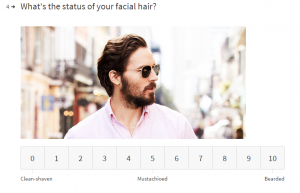
After answering all those questions thoughtfully, the product displayed at the end of the quiz process does seem like it’s a perfect match or, at least, quite convincing.
Takeaway: The best thing about a quiz is that it helps confused consumers find the proper product for themselves and has them handle the purchase with more confidence (after all, you did read and answered all those questions in the quiz… you went through some sort of process, and thanks to the quiz, you know why exactly you are going to buy that product).
2. Transform Your Campaign Into a Game (& a short 3 minute animated movie?)
Ecommerce Example: Chipotle Mexican Grill
Chipotle is a chain of restaurants in US, UK and other countries, popular for its quest for naturally raised meat and wholesome food. Through a short animation film (or should we call it a video campaign?) called The Scarecrow, Chipotle inspires people to “cultivate a better life” while promoting its mission statement i.e. Food With Integrity.
If you watch the last few seconds of the video, you will come to know that Chipotle has actually made a game out of their campaign idea.

In addition to The Scarecrow, Chipotle has rolled out a new web-based game too, which it calls “Friend or Faux?”
Played out in a quiz style, the game compares Chipotle’s food with another food company’s dish and at the end, makes consumers aware of the friendly ingredients and the faux additives found in the food items that are not of Chipotle.
Overall, this quiz-like game is an impressive and interactive content technique to build trust in Chipotle’s food items.
3. Content Engagement
Ecommerce Example: Reebok- Be More Human Experience
Reebok, a fitness and sports apparel website, has launched a “Be More Human Experience” sub-website and the level of engagement and insight it imparts to the audience is simply amazing.
There are basically three interactive content experiences to engage with.
Gray Matter: This is more of an information slide show, telling the participant how a “better workout can build a better brain”. The mix of graphic and information smacks of an infographic, which itself is a highly engaging content piece.
Break Your Selfie: It calls for the audience to post their after-workout selfie on Instagram using the tag #breakyourselfie. In other words, it is a marketing ploy to gather user generated content such that new consumers consider the brand as having high level of consumer engagement.
The Human Score: It asks you some choice questions like “you are at a party teeming with interesting guests… who will you mingle with: a life coach or a novelist”. Depending on your answers, this web-based content tool (or should we say quiz?) will grade you from 0 to 100 as to how human you are.
Conclusion
You could also explore other engaging content ideas. Like memes and infographics. And, yes comics too. The bottom line here is to experiment with new and unusual content styles and concepts until you discover the one that drives the highest level of traffic, engagement and sales to your ecommerce business.
Subscribe to Crackitt's Visual Marketing Workshop
Get exclusive visual marketing lessons and business growth hacks right inside your inbox.




